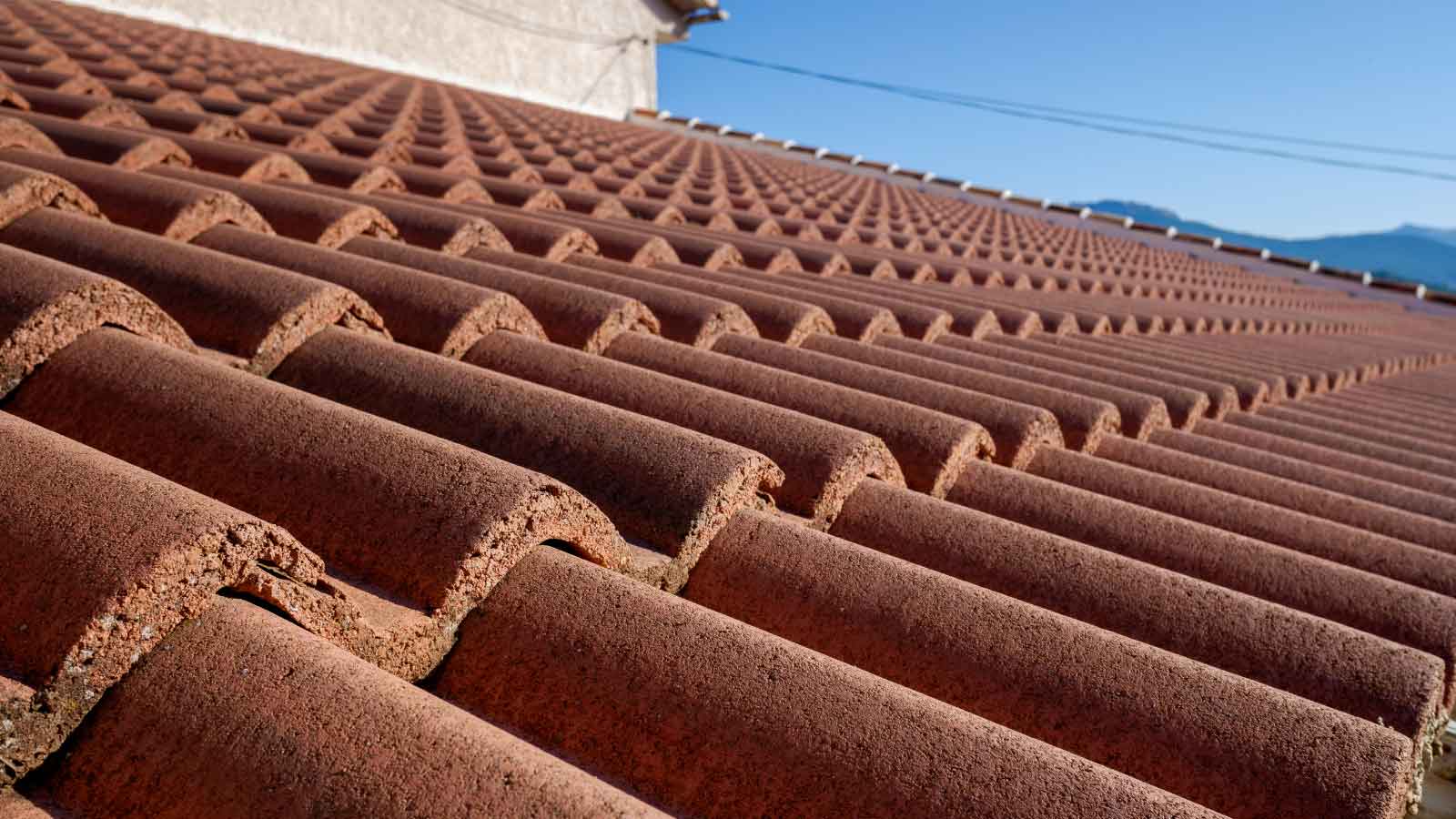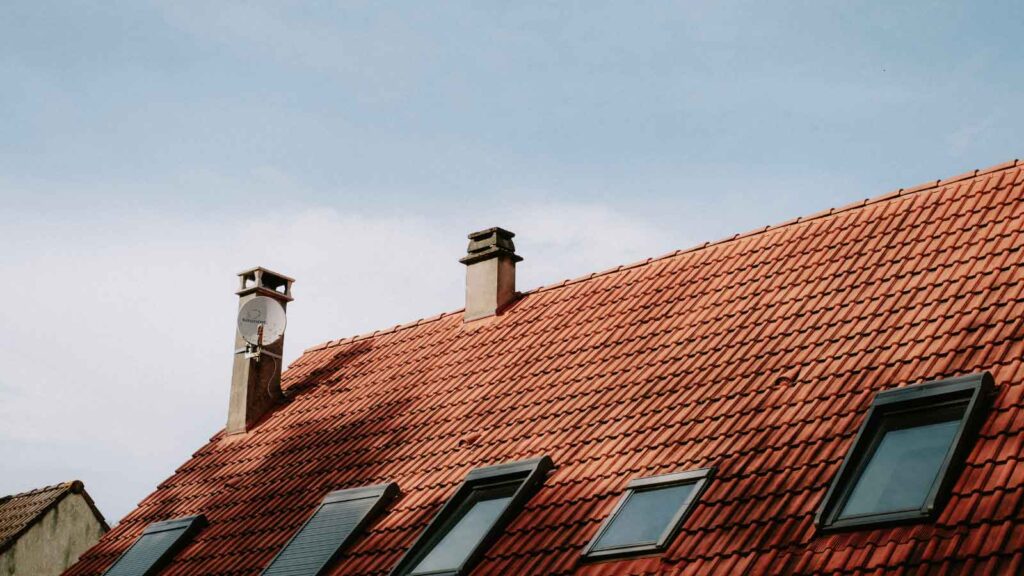Choosing the right roofing material in Orange County can feel overwhelming. The local climate brings heat, sun, salt air, and strong winds, factors that challenge most roofing options. As homeowners look for durability, understanding what works best is key.
In this guide, we’ll explore why clay tile roofs are an ideal solution for our climate. You’ll learn about their long lifespan, their resistance to the elements, and how different types perform over time. We’ll also dive into the factors that make clay tiles the go-to choice for homeowners seeking both durability and style.
Whether you’re planning a comprehensive roof installation or replacing an old roof, this post will help you make an informed decision on which clay tile will last the longest in Orange County’s unique climate.
Orange County’s Unique Climate Challenges for Roofing Materials
Orange County’s climate presents a unique set of challenges for roofing materials. The combination of intense heat during the summer and cool evenings in winter creates constant thermal expansion and contraction. This cycle strains roofing materials, leading to wear and tear over time.
Salt air from the coast also adds to the complexity. It speeds up corrosion, particularly on metal components, and can cause fading or erosion of some roofing surfaces. Materials must be able to withstand this constant exposure without breaking down.
On top of the sun and salt, the region experiences gusty winds and heavy rainstorms. These elements can shift tiles, cause leaks, or even damage improperly installed roofs.
For long-term durability, roofing systems need to be able to handle all of these conditions.
Why Clay Tile Roofs Excel in Orange County’s Mediterranean Climate
Clay tile roofs stand out in Orange County’s Mediterranean climate due to their remarkable ability to handle both extreme heat and coastal conditions. The region’s warm, dry summers and cooler winters place unique demands on roofing materials.
Clay tiles naturally excel here because they offer heat resistance, durability, and excellent insulation. Their ability to reflect sunlight and provide thermal protection keeps homes cooler in the summer, while their resilience against salt air and moisture prevents premature wear.
To give you a deeper understanding, clay tiles are often the best option because of these reasons:
- Heat resistance: Clay tiles absorb and reflect heat, reducing cooling costs and protecting homes from intense summer heat damage to the roof.
- Durability: Clay tiles are non-combustible, making them fire-resistant, which is important given the dry conditions in the region.
- Salt tolerance: The natural composition of clay resists corrosion from salty air, protecting against degradation in coastal areas.
- Moisture resistance: Clay tiles prevent mold and mildew growth, which is crucial for maintaining roof integrity during rainy seasons.
- Longevity: When properly installed, clay tiles can last 50–100 years, offering long-term value and protection.
Clay tiles are not only a great investment for durability but also for the overall comfort of your home. Their reflective properties keep indoor temperatures steady, and their resistance to the elements ensures that you won’t be dealing with constant repairs.
Whether you live near the coast or inland, clay tile roofs provide an effective solution for protecting your home against the challenges posed by Orange County’s climate. With proper maintenance, these roofs can withstand the test of time.
Longevity Analysis of Different Clay Tile Types in Orange County
The longevity of a clay tile roof largely depends on the type of tile chosen. Different styles have varying durability based on their design, material quality, and how they handle the local climate.
Let’s take a closer look at how each type of clay tile performs over time and how it stands up to the challenges of living in Orange County.
Spanish Mission Style Tiles Performance and Lifespan Expectations
Spanish Mission-style tiles are known for their distinct curved shape and long-lasting durability. They are designed to shed water efficiently, making them ideal for managing rain. Proper installation is key, as these tiles can shift over time if not fastened securely, which could lead to leaks.
When installed correctly, Spanish Mission tiles can last between 50 and 80 years. Their resistance to UV rays and heat makes them a great fit for Orange County’s climate. Regular maintenance and proper installation will ensure they continue to perform well for decades.
Although they require careful installation, these tiles offer excellent value and a classic aesthetic. They provide a solid, long-lasting roofing option for homes in the region.
French Provincial Clay Tiles Durability in Coastal Conditions
French Provincial tiles have a simple, elegant design that suits coastal homes well. Their flatter shape allows for good water drainage, while their smooth surface reduces the buildup of salt and debris from the ocean. This makes them highly resistant to coastal conditions.
These tiles typically last between 70 and 100 years with proper installation and maintenance. They hold up well to thermal expansion and contraction, a common challenge in Orange County’s climate. Their durability makes them a top choice for coastal homes.
Their ability to resist salt air and heat makes them ideal for areas with high humidity and sun exposure. With the right care, French Provincial tiles can last for generations.
Flat Profile Clay Tiles Weather Resistance and Longevity
Flat profile tiles offer a sleek design and excellent weather resistance. They interlock tightly, reducing the risk of water leaks and providing extra strength against wind. This makes them a good option for homes exposed to both sun and occasional rainfall.
These tiles can last 50 to 70 years when properly installed. They resist the region’s summer heat, keeping homes cooler and protecting from UV damage. Choosing the best roofing company in Orange County ensures that the roof is installed correctly, maximizing its lifespan.
Their durability and ease of maintenance make them a great choice for homeowners looking for a low-maintenance roof that can withstand changing weather conditions.
Interlocking Clay Tile Systems Long-term Performance Benefits
Interlocking clay tile systems are designed for added strength and security. Their interlocking nature makes them resistant to wind and helps improve water drainage. This feature ensures that homes are better protected during heavy rain or strong winds.
These systems offer a longer lifespan, typically lasting 60 to 100 years. Their design helps prevent shifting and leaks, which makes them an excellent long-term investment. Proper installation and periodic inspections will extend their life even further.
They are ideal for homeowners seeking a roof that combines strength, water resistance, and long-term performance. Interlocking systems provide superior durability in a variety of conditions.
Glazed vs Unglazed Clay Tiles Comparative Lifespan Analysis
Glazed clay tiles are coated with a protective layer that shields them from UV damage and dirt. This coating helps preserve their color and prevents moisture penetration, which increases their lifespan. Glazed tiles typically last up to 100 years.
Unglazed tiles lack this protective layer but still offer durability and a unique aesthetic. They tend to age naturally over time, developing a patina, but can still last between 50 and 80 years with proper maintenance. The main difference lies in the amount of upkeep required.
Choosing between glazed and unglazed tiles depends on your preference for maintenance and appearance. Both types provide a long-lasting roofing solution when installed properly.
How to Choose the Best Clay Tile Type for Your Orange County Home
Choosing the right clay tile type for your home comes down to considering both aesthetic preferences and climate-specific factors. Each type of clay tile offers different benefits depending on your home’s location and exposure to the elements.
Start by evaluating your local environment: are you near the coast, or more inland? Your roof will need to handle the heat, UV exposure, moisture, and possibly high winds, so selecting a tile that suits your needs is crucial.
Other important pointers for choosing the right clay tile are the following:
- Location matters: Coastal homes need tiles that resist salt air, while inland homes require heat-resistant tiles.
- Tile design: Traditional curved tiles work well for Mediterranean-style homes, while flat profiles provide a sleek, modern look.
- Wind resistance: Choose interlocking tiles or properly secured styles for homes exposed to strong winds.
- Maintenance: Glazed tiles require less upkeep, while unglazed tiles offer a more natural look but may need more care.
- Longevity: Consider the lifespan of the tile. More durable tiles, like interlocking or glazed tiles, will generally last longer.
Choosing the right tile depends on your aesthetic goals, maintenance preferences, and the climate challenges in your area. A reliable roofing contractor can help you make an informed choice, ensuring the best long-term performance for your roof.
Maximizing Your Clay Tile Roof Investment in Orange County’s Climate
To make the most of your clay tile roof investment, proper installation and maintenance are essential. First, ensure your roof is installed by a trusted roofing contractor with experience in Orange County’s specific climate challenges. Proper underlayment and the right tile type will provide superior protection against the sun, rain, and salt air.
Regular maintenance is key to ensuring your clay tiles perform well over the years. Even though clay is durable, debris, moisture buildup, or shifting tiles can cause problems. Scheduling periodic inspections and cleaning helps catch minor issues before they turn into expensive repairs.
Finally, maximizing your investment involves protecting your roof against the elements. Use high-quality sealants, replace any damaged tiles promptly, and ensure the roof is regularly inspected for leaks. By taking these steps, your clay tile roof can last for decades, keeping your home safe and comfortable.
Proper care will extend the life of your roof and help preserve its beauty. It’s essential to choose the right materials, trust skilled professionals, and maintain the roof regularly to get the most value out of your clay tile investment. With the right approach, a clay tile roof is a long-lasting, reliable solution for your home in Orange County.





